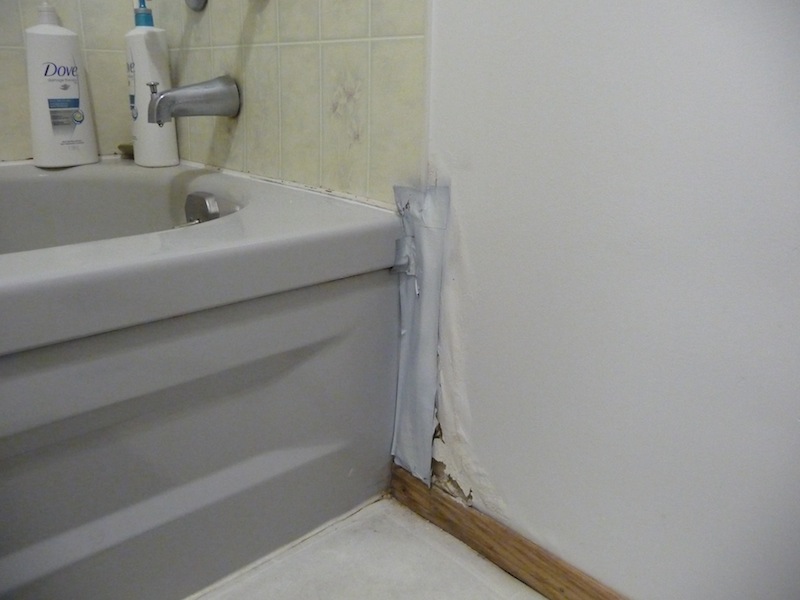Usual Root Causes Of Water Damage in a Bathroom
ArticleIn this article below you will find more decent tips in regards to How to Repair and Prevent Bathroom Water Damage.

The washroom is extremely susceptible for damp buildup and also potential water damage due to the regular use water in it. This post supplies straightforward inspection techniques to help spotting water damage risks.
The regular use water in the shower room makes it exceptionally at risk for wet buildup and also possible water damages. By inspecting it consistently, you can reduce water related damages.
The following collection of inspections is easy to perform and also need to be done as soon as in every 3 months in order to maintain your washroom healthy as well as to avoid prospective water damages triggered by the bathtub, the shower, pipeline joints as well as plumbing, sinks, cupboards, and the commode
Do not disregard doing these evaluations and be detailed while doing them. Bear in mind that these simple examinations can conserve you a lot of cash by supplying early indications for water damages
Tub and also Shower
The shower and also bathtub call for unique attention and also maintenance. Check the floor tiles as well as change if split. Ensure that there is no missing out on cement between the floor tiles. Examine and also replace cracked caulking at joints where the wall surfaces meet the flooring or the tub. Obstructed drains and pipelines problems will certainly prevent the bath tub from drying and also may show serious troubles below the bath tub. Talk to an expert immediately to stop structural damages. Focus on discolorations or soft locations around the bathtub wall surfaces as they might indicate an interior leak.
Plumbing
Signs for water damages are hard to identify considering that most pipelines are installed inside the wall surfaces.
Pay special interest to flooring and also walls dampness and discolorations as they may show an unnoticeable plumbing trouble. Check dampness levels in adjacent rooms also.
Sinks as well as Cabinets
Sinks and also cabinets are revealed to moisture and also humidity everyday and also are typically forgotten. Examine on a regular basis under the sink and on the kitchen counter above it. Fix any drip in the catch as it might suggest drainpipe troubles. Take a look around the sink, slow-moving draining pipes might show a blocked drain. Change sink seals if they are fractured or loose.
The Bathroom
The bathroom is an at risk water joint. Check the water lines and search for leaks around the toilet seat, in the hose pipe, and also under the water container. If you detect any indications of dampness on the flooring around the commode, check for leaks in the toilet rim as well as storage tank seals.
Know that hanging commode dish antiperspirants increases the chances for clogs.
Water Damage Signs In The Bathroom To Avoid Cleanup
Musty smell
This is one of the easiest signs to catch because musty smells are so odorous. The damp, earthy, moldy smell should be a big red flag. The smell will develop when moisture gets trapped in surfaces, and begins to facilitate mold growth. Leaking pipes under cabinets, inside walls, and behind shower fixtures will cause moisture to stay trapped and not dry, which will lead to mold growth and spread. As soon as you notice any musty smells in your bathroom, have it checked for hidden water damage and cleanup signs.
Visible mold
If the smell isn’t there to give it away, sometimes you will actually see mold growth. Finding mold in your bathroom is a serious problem, because mold is very harmful to your health. By the time mold growth is visible, it also means that water damage has already occurred and been present for some time. The only way the mold problem can be resolved is to find the source of the moisture and get it stopped. To safely and adequately remove mold, you need to have professionals handle the remediation. Do not waste any time in getting mold problems addressed, fixed, and sanitized so that you can protect you and your family from the many respiratory symptoms caused by mold exposure.
Damaged floors
Bathroom floors should be able to withstand some exposure to water while still remaining in good condition. However, when excess exposure or water leaks occur, they will begin to damage even the most water-resistant flooring. If you notice any cracking, bubbling, staining, or warping on your bathroom floors, there is probably a water leak somewhere causing the distortion. If you notice areas of the floor have become softer, or even have a spongy feeling, there is probably damage to the subfloor. Subflooring is typically made up of plywood. When plywood is exposed to water or moisture, it will absorb it. Once it has become saturated, the weight of the excess water will cause the wood to swell and soften. Check the floors in your bathroom frequently to catch any of these sings before they lead to damaged subflooring.
Changes on walls
When water leaks behind walls, it will cause changes in the drywall. Peeling plaster, blistering paint, and soggy wallpaper are all good indicators that excess water is building up behind the wall. Water leaking behind drywall will cause it to swell and be soft to the tough. If you start to notice gaps along the trim of your walls, or where tile meets the wall, it could also be a strong indicator that there is a leak behind the wall. Any changes, distortion, or damage on the walls should be evaluated as soon as you notice it to prevent further water damage and cleanup.

As a reader about Common Causes of Water Damage in a Bathroom, I assumed sharing that piece of content was really useful. In case you enjoyed reading our blog post kindly make sure you remember to pass it around. Many thanks for your time. Come back soon.
Go Company